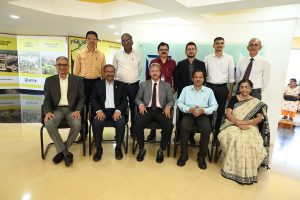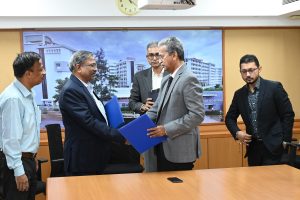- Yoga is the Process of Uniting the Mind and Self June 23, 2023
Andhra Patrika
Continue reading →
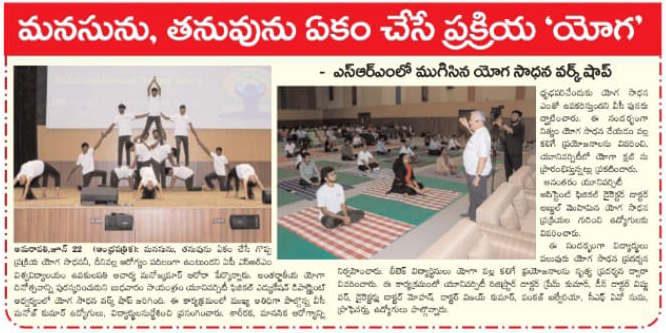
Surya
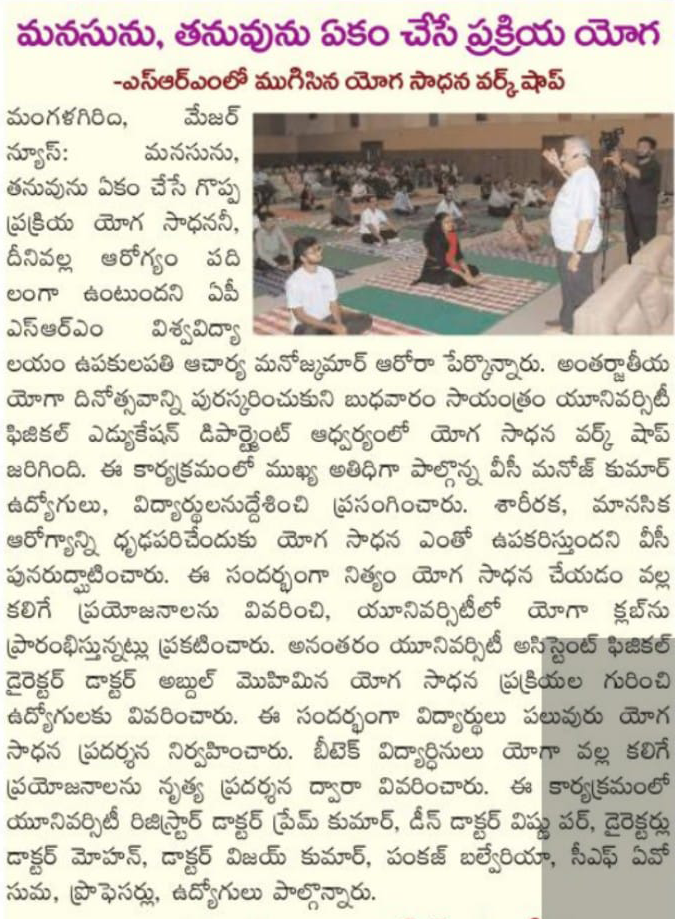
Vartha
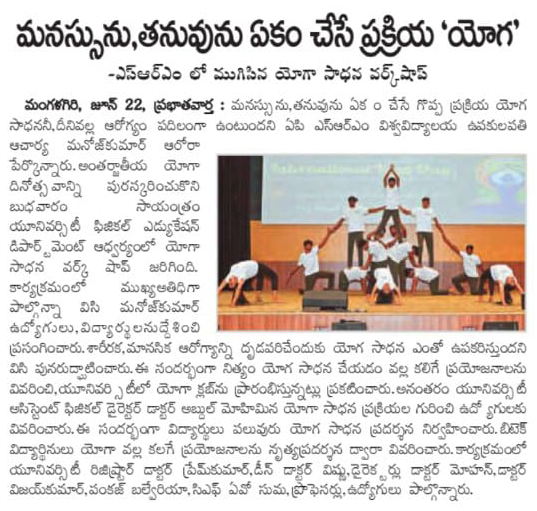
- MoU with NITTE (Deemed to be University) to foster research in Biological Science June 21, 2023
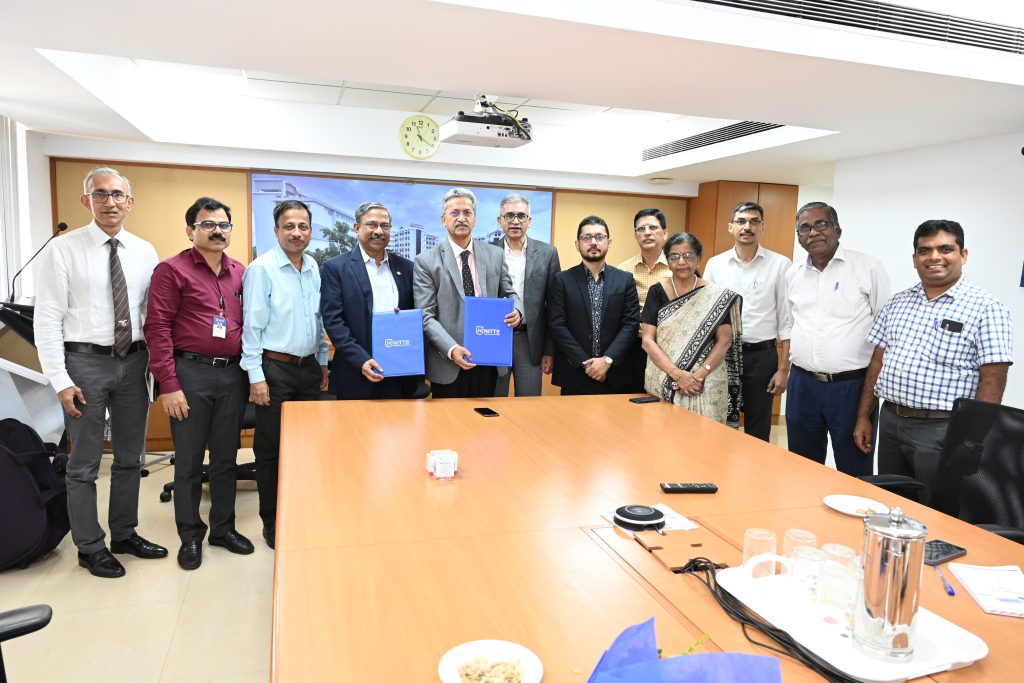
SRM University-AP inked an MoU with NITTE (Deemed to be University), Mangalore, on June 16, 2023, to promote academics and research in Biological Science. The MoU was signed at the NITTE Mangalore campus by Dr R Premkumar, Registrar, SRM University-AP and Prof. Dr Harsha Halahalli, Registrar, NITTE, in the presence of Prof. Dr MS Moodithaya, Vice-Chancellor, NITTE.
Prof. Dr MS Moodithaya termed this association a very important one for the university and expressed his confidence that the formal agreement will foster a mutually beneficial relationship through knowledge exchange, academic excellence, and research of societal relevance between the Universities. “I hope this collaboration can leverage both university’s strengths and complementary skills to undertake research projects that require a combination of expertise. I look forward to the synergy leading to more comprehensive and impactful research outcomes”, commented Prof. Manoj K Arora, Vice Chancellor, SRM University-AP, in response to the MoU.
Prof. Jayaseelan Murugaiyan, Head-Department of Biological Sciences, SRM University-AP and Dr Krishna Kumar, Associate Professor, NITTE University Centre for Science, Education and Research (NUCSER), have been collaborating for the last couple of years in the field of antimicrobial resistance. Prof. Anirban Chakraborty, Director- NUCSER and Prof. Jayaseelan Murugaiyan, SRM University-AP, are the authorised representatives from the respective universities. The Director, R&D; Director, Projects and DST-NUTEC; Director, Academia- Industry collaborations; Director, Institute Innovation Council; and Director, PG Studies and Clinical Research were among the others present on this occasion.
Continue reading → - SRM University-AP inked MoU with NITTE (Deemed to be University) to foster research in Biological Science June 20, 2023
The Hans India
Continue reading →
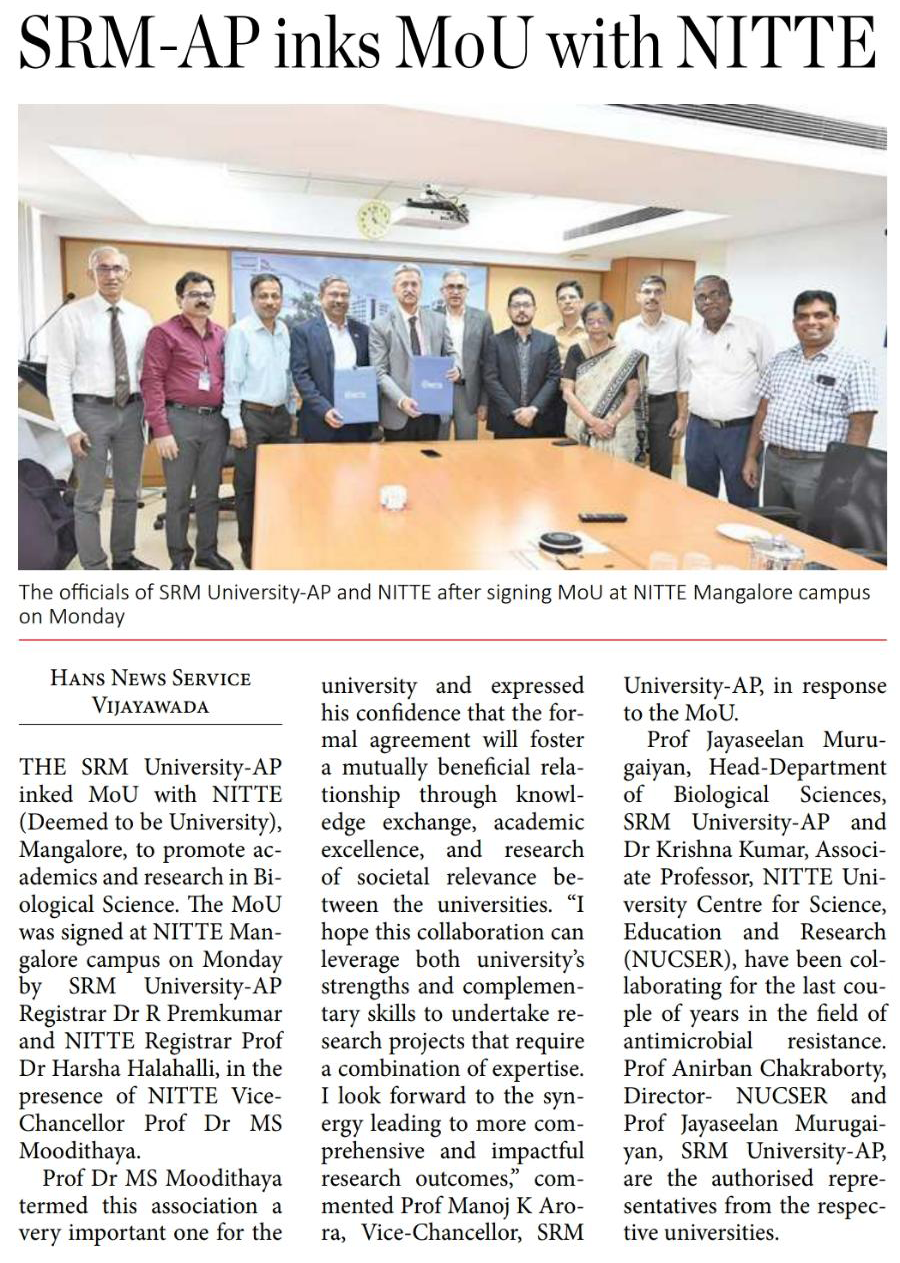
The Pioneer

The News India Express
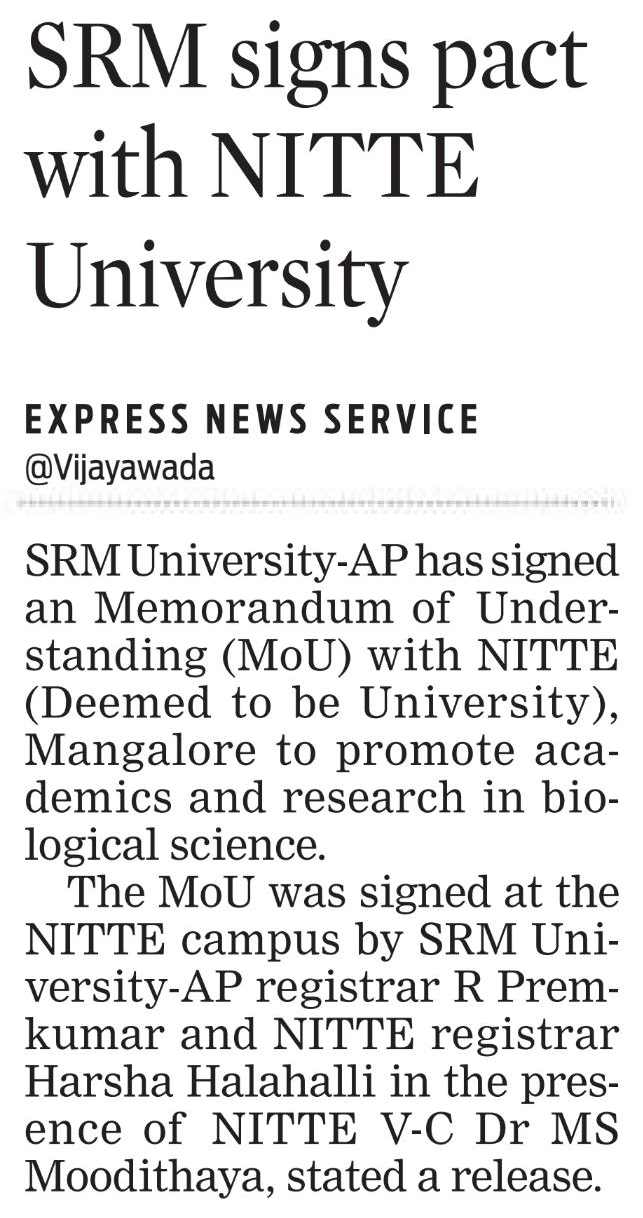
Andhra Patrika
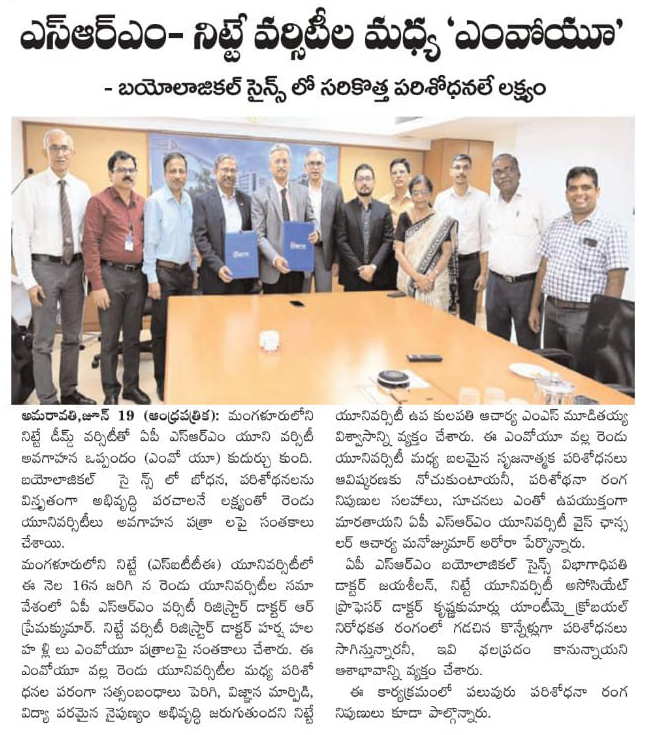
Andhra Prabha
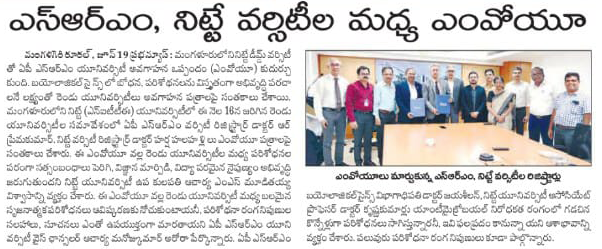
Vartha
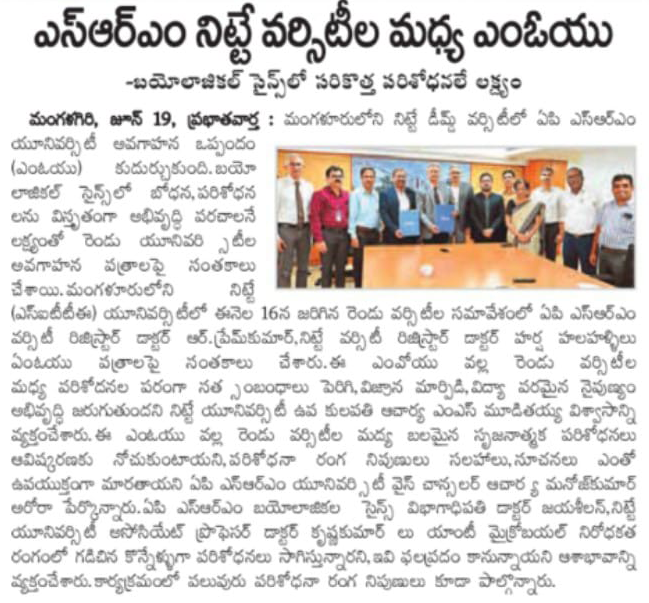
Andhra Jyoti
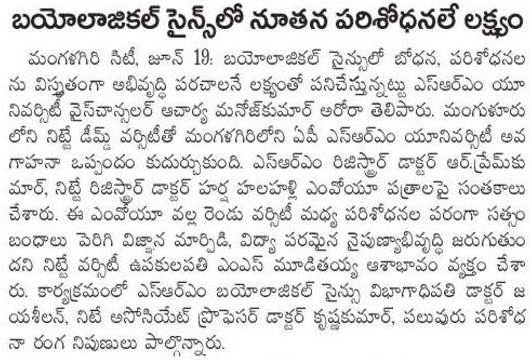
Sakshi
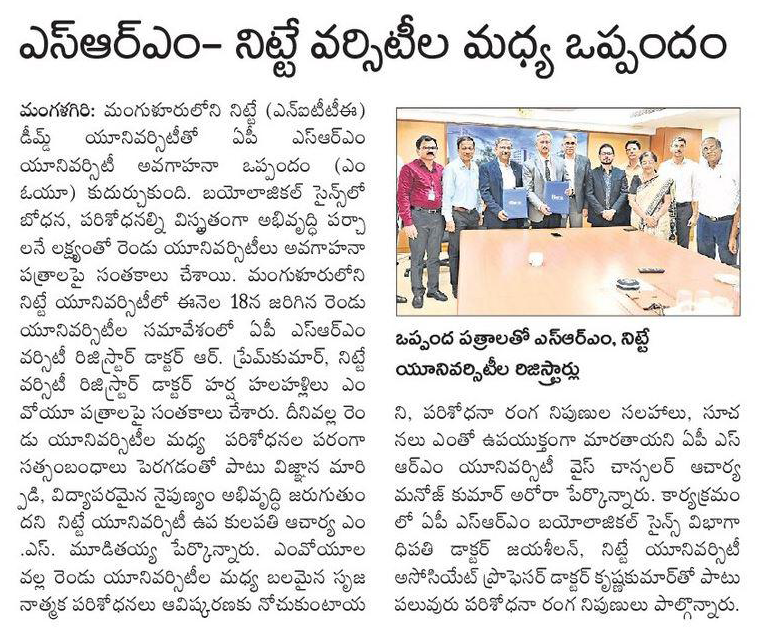
Surya
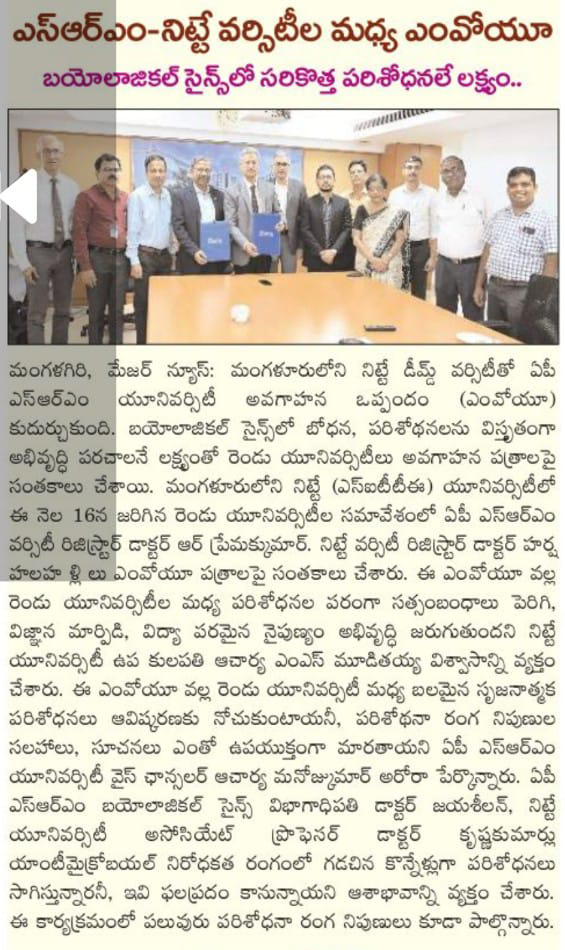
Power

Arthprakash

- Best Paper Award: Conferred to Dr Raviteja KVNS at RAISE 2023 June 20, 2023
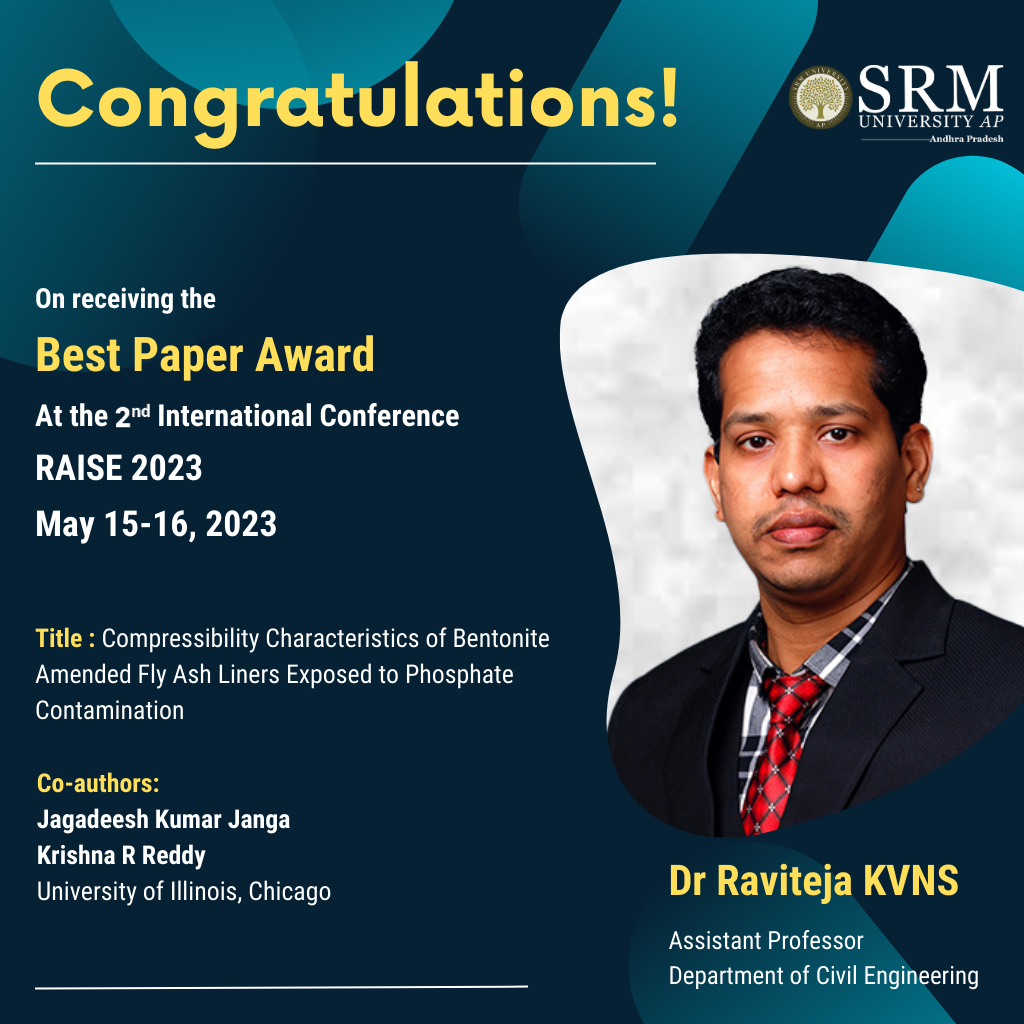
The Department of Civil Engineering is glad to announce that Dr Raviteja KVNS, Assistant Professor, has received the Best Paper Award for his paper titled “Compressibility Characteristics of Bentonite Amended Fly Ash Liners Exposed to Phosphate Contamination” at the 2nd International Conference RAISE 2023 (Recent Advances in Sustainable Environment) held on May 15-16, 2023. Dr Raviteja collaborated with Dr Janga Jagadeesh Kumar and Dr Krishna R Reddy, Civil, Materials and Environmental Engineering, University of Illinois Chicago for the research paper. Their cutting-edge research focused on developing alternate liner materials for waste containment systems.
Abstract
Waste containment systems like landfills, and impoundments are often lined with low permeable clays of hydraulic conductivity less than 10-7 cm/s. However, it is often challenging to get large volumes of low permeable clays near the project site. Conveyance of large volumes of clay from distant locations can be unsustainable due to the associated carbon emissions and energy costs, and not viable financially. Hence, there is a need to identify alternative liner materials without compromising on the containment capabilities. This study proposes the use of fly ash, amended with bentonite, as an alternative to the traditional liner systems. From preliminary studies, it is understood that a mixture of 80% fly ash amended with 20% bentonite is optimal to function as an effective liner material. However, the hydro-mechanical stability of liners needs to be investigated under different contamination scenarios. The present study reports the compressibility behavior of the proposed liner system under phosphate contamination, typically found in landfill leachate, impoundments, and stormwater retention ponds. One-dimensional consolidation tests were conducted on pure bentonite and fly ash with water to study the compressibility characteristics of individual materials. The optimum mix (80-20) was then tested at three different solutions exposure: water, 3.2 mg/L PO4-3-P and 12 mg/L PO4-3-P. It is depicted that the addition of 20% bentonite to fly ash did not affect the compressibility significantly, while the presence of phosphate contamination did not compromise the hydro-mechanical stability of the proposed liner system.
Continue reading → - Dr Seema Rani June 20, 2023


